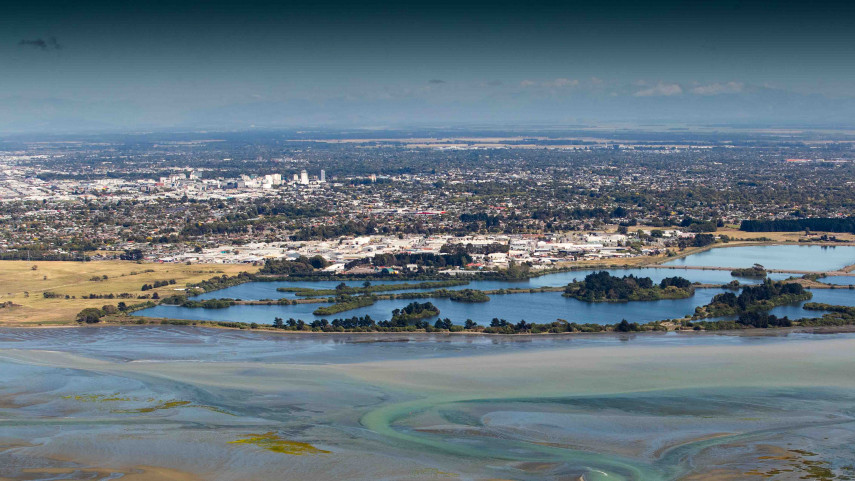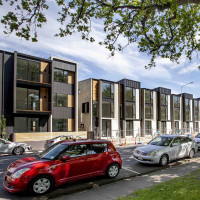
Christchurch: The growth challenge

Share this story
Population growth, housing issues and climate change are prompting a re-think of some of Christchurch’s planning rules. Christchurch City Council Chief Executive Dawn Baxendale explains what is happening and why.
Christchurch is going from strength to strength as a city and our population is growing as more people discover the benefits of living and working here.

Christchurch City Council Chief Executive Dawn Baxendale.
We are New Zealand’s second largest city and one of fastest growing regions in the country.
Growth like we’re experiencing brings opportunities and challenges. People need places to live, places to play and easy ways to get around. We need to provide all of these things while still safeguarding the environment and values that make Christchurch such a special place to live.
In the coming weeks and months, you will be hearing and seeing lots of information from Christchurch City Council about changes we are proposing to our District Plan to accommodate for our continued growth and prosperity.
These District Plan changes will affect how our city grows sustainably, how we move around, the type of housing we live in, and how we adapt and respond to climate change and coastal hazards.
We need to make sure that we are able to provide the transport infrastructure, services and housing to cater for that growth in a sustainable way. And we need to respect mana whenua values and protect the things that make us unique so people continue to want to live here and thrive here.
National direction
Some of the changes to our planning rules that you’ll hear about in the coming months are being driven by the Government, at the national level.
There are important conversations being led by the Government about how to ensure our towns and cities develop in a way that will meet the changing needs of our diverse communities, while addressing the issues we’re facing, such as climate change and housing affordability.
This is all having an impact on what we do at a local and regional level as we have to follow the direction set by the Government.
For example, many of you will already be aware that the Government has prioritised the need for more housing to accommodate our growing population and wants to see this happen by allowing our cities to grow upwards rather than outwards. It has mandated this through the National Policy Statement – Urban Development (NPS-UD) and through the Resource Management (Enabling Housing Supply) Amendment Act.
More housing

Population growth is pushing up demand for new housing.
Shortly we will begin sharing information with you on how we propose to give effect to the NPS-UD and the Enabling Housing Supply Act through our District Plan.
In most residential areas of the city we are going to have to enable medium density housing- that means people will be able to build more, and taller, houses as of right.
Building more houses on our existing footprint means we don’t need to build houses and roads on the precious, versatile soils on our suburban fringe. The closer people live to work and school, the less travelling we need to do, which results in fewer emissions.
However, we are conscious that people have concerns about how housing intensification will impact on the character of their neighbourhood and on their own homes.
While we will be following the Government’s direction to enable more housing, we will also be working to identify and protect areas of the city that we believe are not suitable for intensive housing development. They may be unsuitable for a number of reasons. For example, they could be at risk from natural hazards or they might be in an area that has special heritage value.
Our challenge is to make sure that we grow in such a way that protects our precious, productive land; our environment, our lifestyle and the things we value. We are going to have to look at the way we travel, where and how we live, and how we use available land.
We need to make sure our neighbourhoods are well planned so people have access to travel links – ensuring they can get to work and school easily – and all the other amenities and greenspace that make them a great place to live.
Coastal hazards
As a city, Christchurch is more exposed to coastal hazards than either Wellington or Auckland. As climate change leads to sea level rise, Canterbury will become the most exposed region in New Zealand. We need to plan now for the effects of coastal hazards on our communities, infrastructure and environment, so that we are ready for what we will be facing in the future.
We have already begun engaging with affected communities and released a discussion document in October 2021 that explores options for managing future development, subdivision, redevelopment and changes in land use in areas exposed to coastal hazards.
It is the first step towards a District Plan Change that will ensure we meet our responsibilities to implement national and regional policy and adequately manage the risk to people and property from coastal hazards.
Change brings opportunities
Changing the way we do things is challenging and sometimes it is hard to imagine how our future may look. But change also brings opportunity.
We know for certain that our climate is changing, our population will continue to grow and, as a result, there’s going to be pressure on our infrastructure, and environment.
For the sake of future generations, we need to make good decisions now about how we grow and where we grow so that our city remains a great place to live and do businesses, and that we are well positioned to respond to climate change and population growth.


